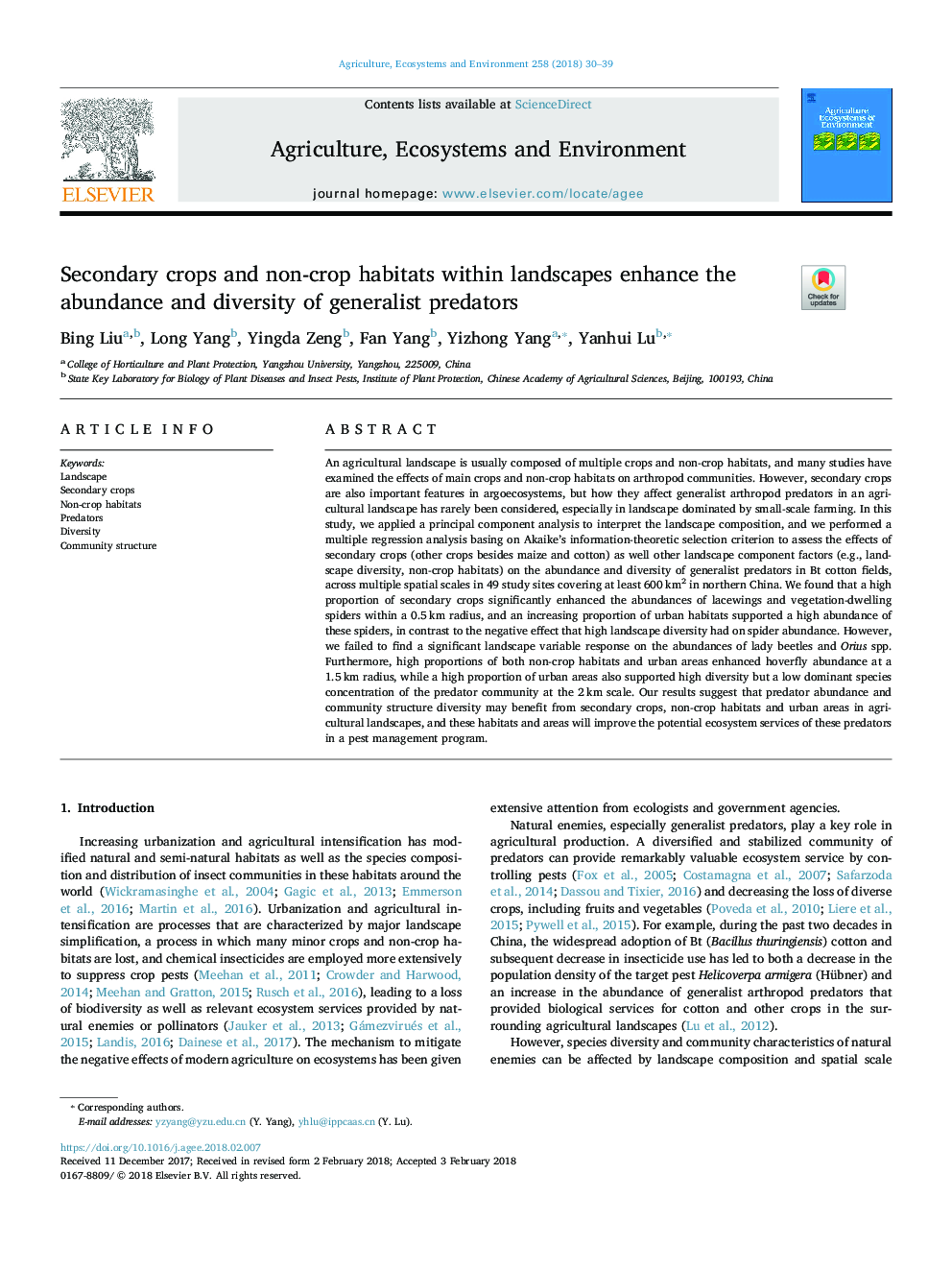| کد مقاله | کد نشریه | سال انتشار | مقاله انگلیسی | نسخه تمام متن |
|---|---|---|---|---|
| 8487113 | 1551994 | 2018 | 10 صفحه PDF | دانلود رایگان |
عنوان انگلیسی مقاله ISI
Secondary crops and non-crop habitats within landscapes enhance the abundance and diversity of generalist predators
ترجمه فارسی عنوان
محصولات ثانویه و زیستگاه های غیر زراعی در مناظر، فراوانی و تنوع شکارچیان وسیع را افزایش می دهند
دانلود مقاله + سفارش ترجمه
دانلود مقاله ISI انگلیسی
رایگان برای ایرانیان
کلمات کلیدی
چشم انداز، محصولات ثانویه، زیستگاه های غیر زراعی، شکارچیان، تنوع ساختار جامعه،
موضوعات مرتبط
علوم زیستی و بیوفناوری
علوم کشاورزی و بیولوژیک
علوم زراعت و اصلاح نباتات
چکیده انگلیسی
An agricultural landscape is usually composed of multiple crops and non-crop habitats, and many studies have examined the effects of main crops and non-crop habitats on arthropod communities. However, secondary crops are also important features in argoecosystems, but how they affect generalist arthropod predators in an agricultural landscape has rarely been considered, especially in landscape dominated by small-scale farming. In this study, we applied a principal component analysis to interpret the landscape composition, and we performed a multiple regression analysis basing on Akaike's information-theoretic selection criterion to assess the effects of secondary crops (other crops besides maize and cotton) as well other landscape component factors (e.g., landscape diversity, non-crop habitats) on the abundance and diversity of generalist predators in Bt cotton fields, across multiple spatial scales in 49 study sites covering at least 600â¯km2 in northern China. We found that a high proportion of secondary crops significantly enhanced the abundances of lacewings and vegetation-dwelling spiders within a 0.5â¯km radius, and an increasing proportion of urban habitats supported a high abundance of these spiders, in contrast to the negative effect that high landscape diversity had on spider abundance. However, we failed to find a significant landscape variable response on the abundances of lady beetles and Orius spp. Furthermore, high proportions of both non-crop habitats and urban areas enhanced hoverfly abundance at a 1.5â¯km radius, while a high proportion of urban areas also supported high diversity but a low dominant species concentration of the predator community at the 2â¯km scale. Our results suggest that predator abundance and community structure diversity may benefit from secondary crops, non-crop habitats and urban areas in agricultural landscapes, and these habitats and areas will improve the potential ecosystem services of these predators in a pest management program.
ناشر
Database: Elsevier - ScienceDirect (ساینس دایرکت)
Journal: Agriculture, Ecosystems & Environment - Volume 258, 15 April 2018, Pages 30-39
Journal: Agriculture, Ecosystems & Environment - Volume 258, 15 April 2018, Pages 30-39
نویسندگان
Bing Liu, Long Yang, Yingda Zeng, Fan Yang, Yizhong Yang, Yanhui Lu,
